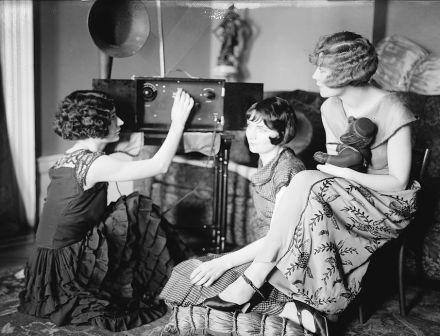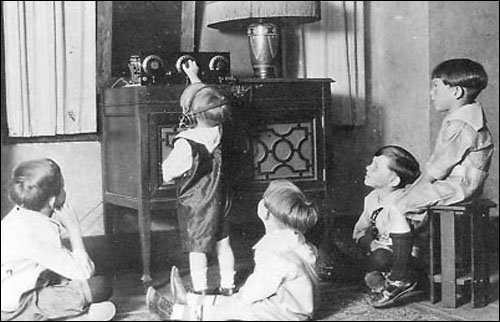The 1920s - Chapter 7
"What Changed & Stayed The Same After World War 1"
Main topic


Subtopic
Subtopic
Changes In Daily Lifestyle
Aravind Venugopal
Science and Technology Shikhar Davla
Influenza: 1918-1919
Bhavya Karnavat

How this changed the medicare system?
Floating topic

Why and how did the flu started?
Floating topic

How many people were affected?
-The Spanish flu, caused about 50 million
deaths worldwide
- It may have killed an average of 3% to
6% of the world population
- People aged 20 to 30 had highest chance
to get infected
- It was called the pre-antibiotic era, were
people with higher inflections had higher
chances to die
Media & Arts In Canada
Zaid
How did Media & Art change in the 1920s, and how did it affect Canada in the long run?
Relating “How art and media was changed in the 1920s, and how it affected Canada in the long run?”, to “How was Canada the same or different in WWI?”
Art and expressionism were a lot more common back then due to the good times, and wealth allowed people to live life more in the fun way
Canadian Identity was built and clarified a lot by the new modes of expressionism, art forms, art styles, and how they might have tied into the patriotism and nationalism Canadians may have felt towards the nation due to the good times
Visual art was made unique and developed a flair, instead of following British and other European art styles
Technology allowed different means of delivering the art and messages
Changes in social standards allowed women and Canadians in general to flourish on the world stage

Mirror Lake - Painting by Franklin Carmichael from The Group of Seven in 1929
Montréal depuis l'île Sainte-Hélène - A painting by
James Pattison Cockburn from 1830
Visual Arts
Cinema
Mary Pickford in a colour testing video from the 1920s
during the 1920s and the good times, people had easy access to readily available money, which meant even the middle class could afford some of the modern technological luxuries of the time. The radio became the main entertainment source of the 1920s, and cars, getting more advanced, safe, reliable and moreover, cheaper, meant that people could travel like never before. just like traveling, even sending messages over long distances was a difficult, expensive and time consuming process. however, Sir Alexander Bell's telephone, the model that laid the foundation for modern day smartphones and landlines, made communication over long distances easy. These inventions were not only significant in the 1920s, but also went down the history line to change completely the way people lived. Cars have completely modernized to add a new dimension to lifestyle. Radio has evolved into modern, well structured radio station which adds to the way people look at entertainment. Telephones were the blueprint for modern day smartphones and communication devices, something modern generations cannot live without. unfortunately, the Great Depression followed by World War 2 did not allow these innovations to take full flight in the 1920's itself. however, post ww2, these innovations chnaged the way people lived forever.

the cars in the 1920s including this Ford Model T mean that traveling long distances became much easier. Companies such as Ford and General Motors went on to become huge manufacturers of the automobile industry. they fought the Great Depression and today are well reputed car manufacturers.

for middle class families in Canada, the radio became an affordable and convenient means of entertainment. The Rogers company who produced radio services were also successful in battling the Great Depression and are today one of Canada's biggest Service providers

the telephone invented
by sir Alexander Bell
made long distance
communication very
easy.
The Group of Seven - A group of Canadian artists in the 1920s who transformed Canadian Identity in the world of Visual Arts. The original Group of Seven consisted of Franklin Carmichael, Lawren Harris, A.Y. Jackson, Franz Johnston, Arthur Lismer, J.E.H. Macdonald and F.H. Varley.
Direct Evidence: Bright colours, wide range of colour temperature, hyper-saturated. The painting is not overly-realistic
Indirect Evidence: The bright colours are the signature sign of a painting by a member of The Group of Seven. The bright colours and their extremely eye-catching aesthetic was revolutionary and the dictating feature of Canadian visual arts at the time. The Group of Seven influenced Canadian Art so much that some even called it the largest defining movement of art in Canada. The saturated, beautiful colour scheme was a refreshing change to art previously made in Canada which used to be less saturated, and have very very strong influences from European art styles. Earlier in the 19th century, Canadian art, amongst most other European art, was meant to imitate real life. They tried to focus on making things look as realistic or as life-like as possible. However, the influence of The Group of Seven amongst several other artists, Canadian art grew to be more and more unique, or even imaginative. The vibrancy seen in this painting can be found nowadays in multiple different pieces, but a large portion of the inspiration can be traced back to this group of artists and paintings like these. The Canadian artist group’s work is amongst some of the world’s best and have been sold for the price tag of over $1,000,000. The photos, and the large difference between them goes to show how much Canadian art evolved over time, how different the art styles were, the growth of expressionism in the 1920s, the need and use of art as a form of communication and even therapy. The art portrays landscapes in Canada as heavenly, bright, vibrant, and full of life. The Group of Seven went on to give many people a sense of Canadian Identity in the 1920s as nationalism was important to the people in Canada and a beautiful viewpoint of the country through the scope of seven artists.
Media & Technology
Direct Evidence: The old time-y video shows Mary Pickford in colour, posing for a camera to test colour. Mary is dressed in seemingly expensive clothing & is wearing seemingly expensive makeup. Mary is wearing the same costume seen in the movie `The Black Pirate`
Indirect Evidence: Mary Pickford in this video is smiling for the camera, flaunting in front of the testing of colour video. It can be inferred that she was extremely wealthy and highly regarded by the cinematic world because of her appearances in early colour video. Mary Pickford was dressed in the same costume as The Black Pirate so it can be inferred that she was screen testing for the movie. The Black Pirate was one of the movies Mary Pickford was in, and she later went to win an academy award for her future work. She also became the first actress to earn a million dollars yearly. Just from this 2 minute clip, we can see a lot of Mary`s personality, her confidence, and her large appearance in the cinematic scene as it began to flourish. The clip can show us a lot about "America's Sweetheart", or whatever footage of her was preserved.
Changes in Health and Sciences
Jayce Wang

Direct Evidence:This primary source shows Sir Frederick Banting on the right, his assistant Charles Best on his left and the dog that they conducted their initial experiment on. From the picture, it can be inferred that Banting and best worked very hard on experiments because of their rolled up sleeves which means they were often working hands on with their experiments.
Indirect Evidence:Sir Frederick Banting (on the right)'s idea on the cure to diabetes was the start of something big. Dr.Banting had an idea that some kind of internal secretion of the pancreas was the key to preventing diabetes and controlling normal metabolism. He was able to conduct experiments because he was advised at the University of Western Ontario to take his idea back to the University of Toronto, which had extensive research facilities under the direction of a renowned physiologist and expert in carbohydrate metabolism, John James Rickard Macleod. Macloed supervised his work and granted Banting Charles Best, who was Banting's assistant as well as a medical student in the University of Toronto. The big step forward in terms of his experimental results occurred when he surgically ligated the pancreatic ducts from the dog presented in the picture. Then On 30 July he and Best injected an extract of degenerated pancreas from a duct-ligated dog into another depancreatized, diabetic dog and observed a sharp drop in its blood sugar. This was a huge breathrough in Banting's experiments. Later he verified his results by performing the same experiments on several other diabetic dogs all with similar success. Eventually the team decided they could safely begin testing their pancreatic extracts on human subjects. On 11 January pancreatic extract made by Banting and Best was injected into the body of Leonard Thompson, a 14-year old boy on the brink of death from diabetes in Toronto General Hospital. Everyone was disappointed when measurements showed the test was a failure. But 12 days later, on 23 January, the team resumed administration of extract on Thompson, and now had spectacular success. This was a spectacular feat and it quickly became globally famous. He was also acknowledged by the Nobel prize comitee and was awarded The Nobel Prize in Physiology or Medicine in 1923 with Macloed. However Banting did not feel Macloed deserved his share of teh prize because there were bigger contributors to this discover such as his assistant Charles Best.
Subtopic

